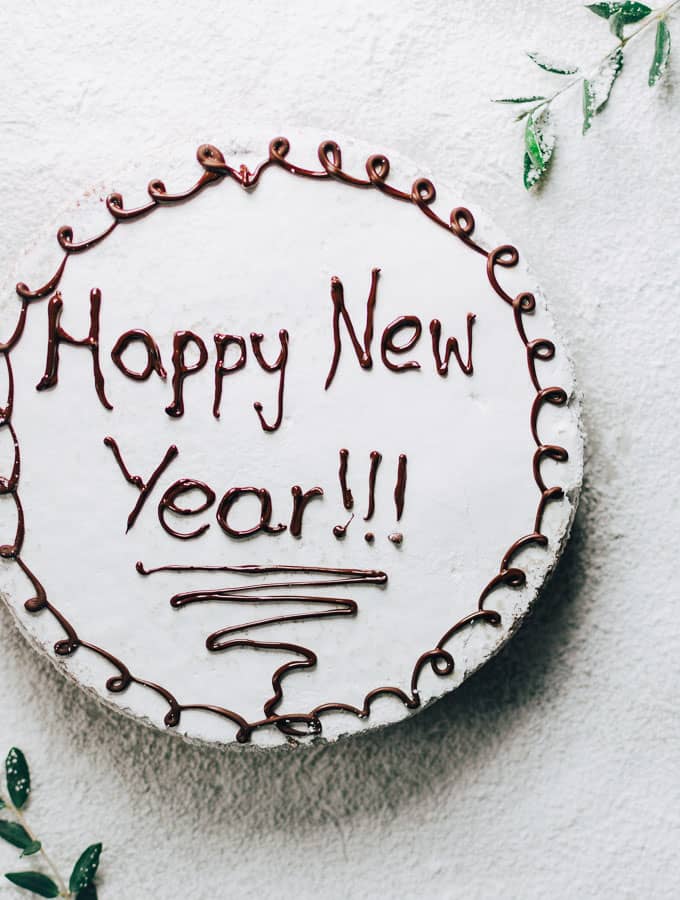
Did you know that instead of Santa Claus in Greece we have Saint Basil? It's the same guy with the red uniform and long white beard who brings the Christmas gifts and climbs down the chimney. Just under a different name.. And what does this have to do with this New Year's Cake? Well, it's named after him! Vasil-o-pita, where pita means pie and Vasil stands for Vasilis (Basil).
The Saints & The Greek Celebrations
Saint Basil's day is celebrated on the 1st of January. While Saint Nicholaus is celebrated on the 6th of December. In Greece, these are actual name day celebrations which means whoever is named like that, celebrates the same way they do on their birthday.
And since I started telling you of these Saints I may as well finish so you'll understand where all these traditions came from. So, Saint Nicholaus (Claus), was an early Christian bishop (270-343 AC) of the Ancient Greek maritime city of Myra in Asia. Born in a wealthy Greek family, he spent his life and his wealth on helping the poor by opening hospitals and charities. Hence the Christmas spirit of giving and sharing.
Saint Basil was a Greek bishop in Caesarea Cappadocia (330-379 AC), Asia Minor. An influential theologian, who opposed to the heresies against the early Christian church. Again with a great life's work helping the poor and less privileged.
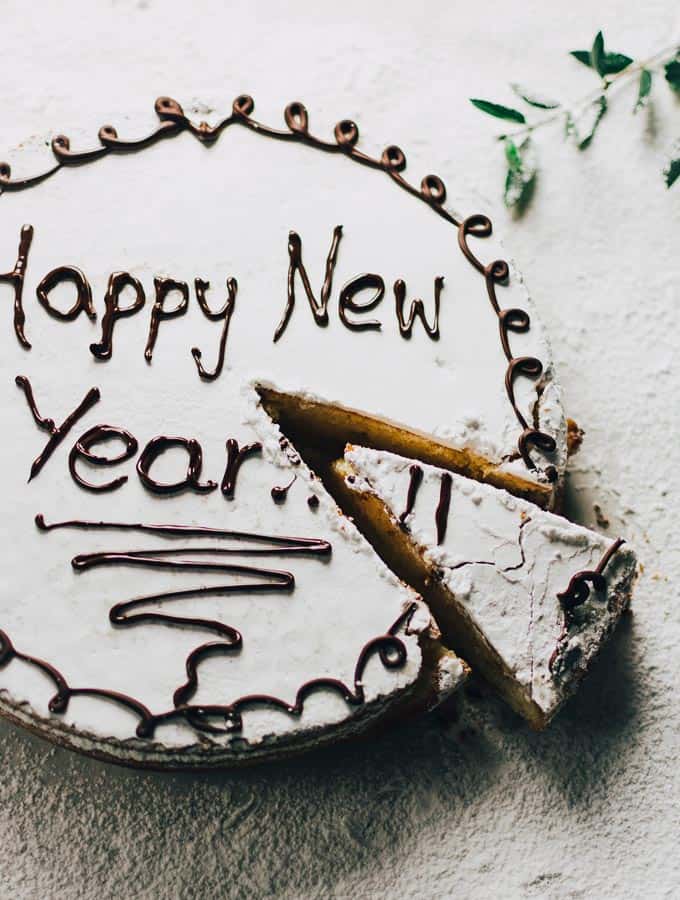
So Greek tradition has it, that on the 1st of January we serve the New Year's Cake (Vasilopita) with a hidden coin inside. We cut one piece for Saint Mary, one for Jesus, one for the house, one for the land, and then cut a piece for each family member. Starting with the eldest and ending with the youngest. Now whoever finds the hidden coin, is to have good luck for the whole year.
The Greek New Year's Cake
As for the cake itself, it's very soft, buttery, and very aromatic. Flavored with brandy and orange. But the best thing about it is the icing sugar and chocolate bits on top (that's my favorite part).
Writing With Chocolate...
And yes, those are letters written with melted chocolate. Not very neatly though, since I'm used in writing this in Greek. You can easily do this using a piping pen. Just fill with chocolate and write like you would with a normal pen.
It's better to use some baking chocolate (Couverture) as it is meant for melting. You can melt the chocolate in a stovetop double boiler, or in the microwave. It takes 2-3 minutes on medium heat to melt in the microwave, but make sure you stir very well every 30 seconds so it won't burn on the sides.
The warmer the melted chocolate the runnier it will be so you'll have to use quickly. Be careful not to overheat the chocolate and burn it though, because it will lose its shininess and become firm. In that case, you can revive it by stirring in a bit of fat (butter or oil).
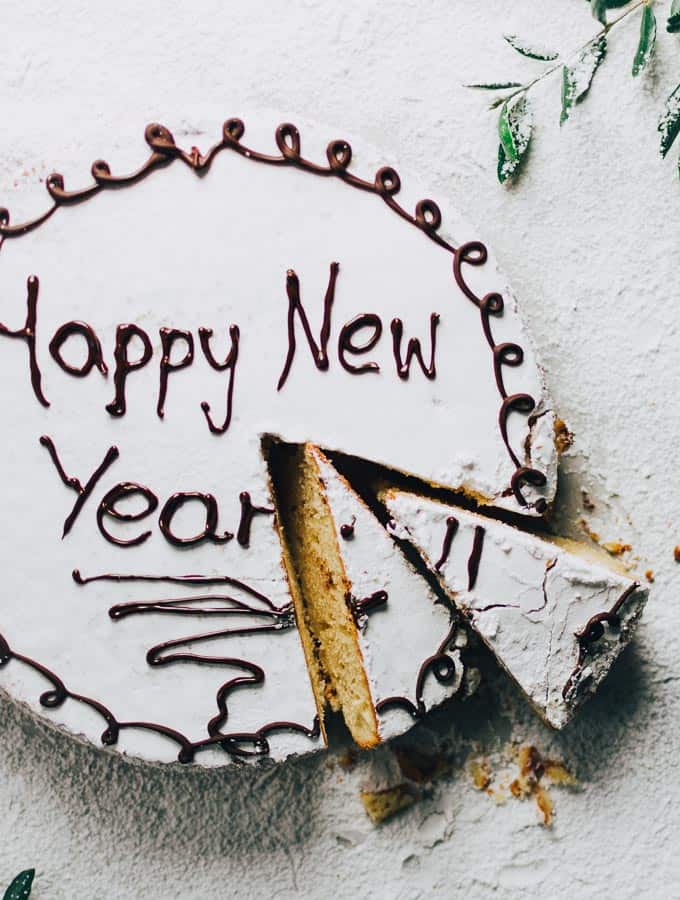
If you don't feel comfortable writing with the melted chocolate there are a few other options like:
- Use flaked almonds to form the year number, instead of writing a whole happy New Year.
- Use paper numbers and dust the icing sugar on top. Then remove for the number to appear on the cake.
- Use a firmer chocolate icing. Or a white chocolate glaze.
- Don't write anything at all. Add a paper doily on top and dust with icing sugar. Then remove carefully for the shape to appear on the cake.
When To Place The Coin In The Cake
Some people add it to the cake batter before it gets baked. I don't really find a reason for this, as it may land on the bottom, and can be easily seen when the cake is served. Ruining all the fun of searching for it.
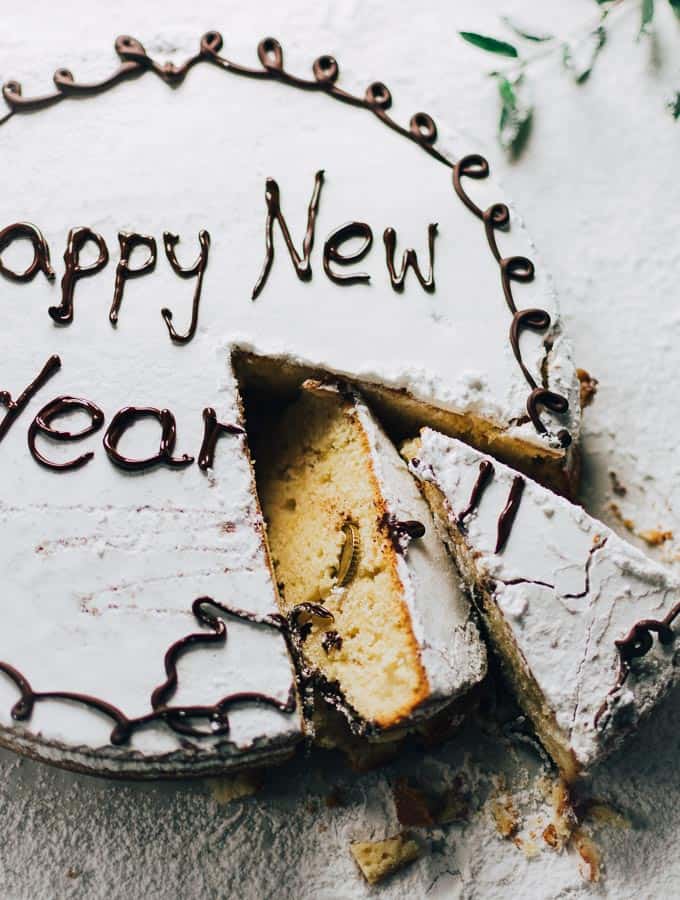
The best way to add the coin is once the cake is baked. You carefully insert it in the cake keeping in mind how you cut the cake later on, so it takes less width space as possible. This way, it will land in one piece and not between two pieces when cutting.
As for the coin, go for something small enough to hide easily, but not as small that could choke someone (that wouldn't be too lucky now would it?) so don't forget to tell everyone about it ?.
Recipe
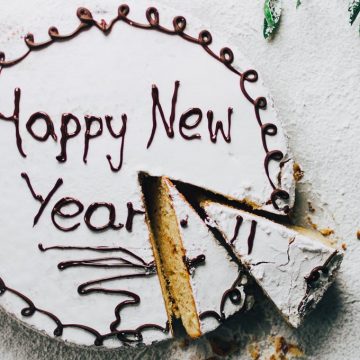
Greek New Year's Cake - Vasilopita
Ingredients
- 225 grams / 8 oz butter at room temperature
- 200 grams / 7 oz icing sugar + extra for adding on top
- ½ orange zested
- ½ teaspoon ground nutmeg
- 1 teaspoon vanilla extract
- OPTIONAL: 1 teaspoon mahleb powder
- 3 tablespoons brandy or scotch
- 2 eggs
- 80 ml milk
- 1 teaspoon baking soda
- 400 grams (2 + ½ cups) flour sifted
- 1 teaspoon baking powder
- 120 grams / 4.2 oz unsweetened baking chocolate
- 1 small coin
Instructions
- Preheat oven to 180°C / 356°F.
- Add the flour together with the baking powder in a bowl and set aside.
- Cut the butter into small pieces and add it to your electric mixer's bowl, along with the icing sugar, orange zest, vanilla extract, nutmeg, mahleb powder, and brandy.
- With the whisk attachment on, start beating over low speed until the icing sugar gets absorbed by the butter. Then turn speed to medium-high and beat for 15-20 minutes. Until butter becomes completely soft and creamy (like when making buttercream). Meanwhile, add the milk to a small bowl and dissolve the baking soda in it.
- Drop the speed to low and add the eggs one by one. Give it a minute for the eggs to incorporate and then add the milk and baking soda mixture.
- Once fully incorporated, begin adding the flour and baking powder mixture slowly and in batches. Turn the speed to medium for a minute or two for everything to combine well. If needed scrape the sides of the mixer's bowl from any butter remnants.
- Grease a springform cake pan (23 cm / 9 inch round) with cooking spray and add the cake batter. Spread evenly with a spoon.
- Bake for about 20-25 minutes. To make sure it's ready prick the center with a toothpick to see if the toothpick comes out clean.
- Let the cake reach room temperature.
- Once the cake has cooled, it's time to add the coin. Press the coin inside the cake. Then remove the cake pans ring and flip the cake on a serving plate so its flat bottom side is facing upwards.
- Dust with plenty of icing sugar on top. Enough to create a thick white layer and fill any little holes the cake may have.
- Take a piece of parchment paper and lay it gently on top of the cake. With your hands gently rub the parchment paper making the icing sugar below it to stick together and become smooth.
- Carefully remove the parchment paper.
- Melt the chocolate either in a double boiler or in your microwave using a microwave-safe bowl. Make sure you stir every 30 seconds so it won't burn.
- Transfer chocolate in a piping pen and decorate the cake by writing a Happy New Year or the New Year's number.
- Let the chocolate cool and you're ready to serve!
- You may also use paper numbers and dust the sugar on top. A much easier way. Or even use a white chocolate glaze on top and decorate with some pomegranate seeds all around. And then form the new year's numbers in the center with little chocolate sprinkles or drops. Just let your imagination run free and decorate it your way!
Nutrition
YOU MAY ALSO LIKE...

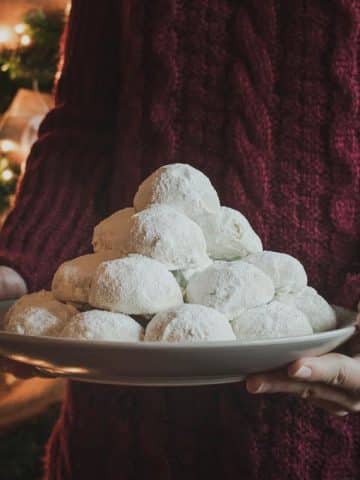
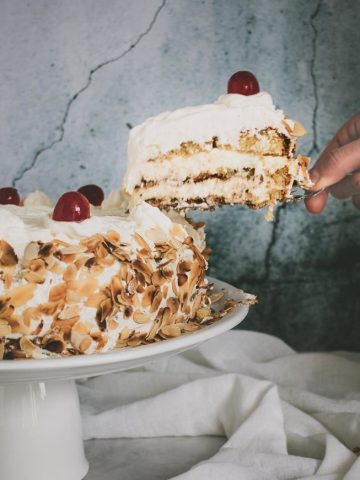


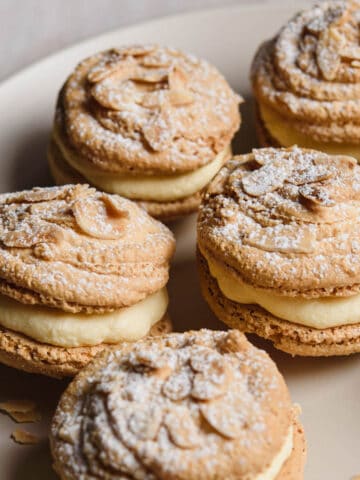
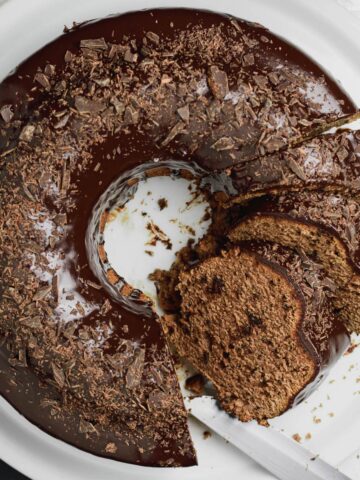
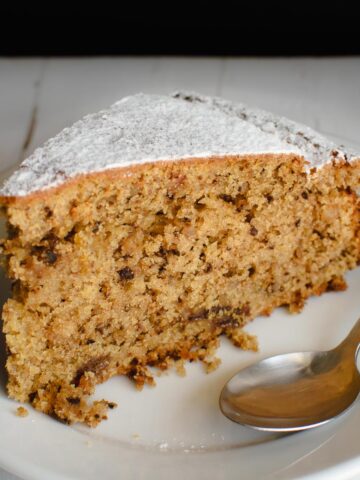

Leave a Reply